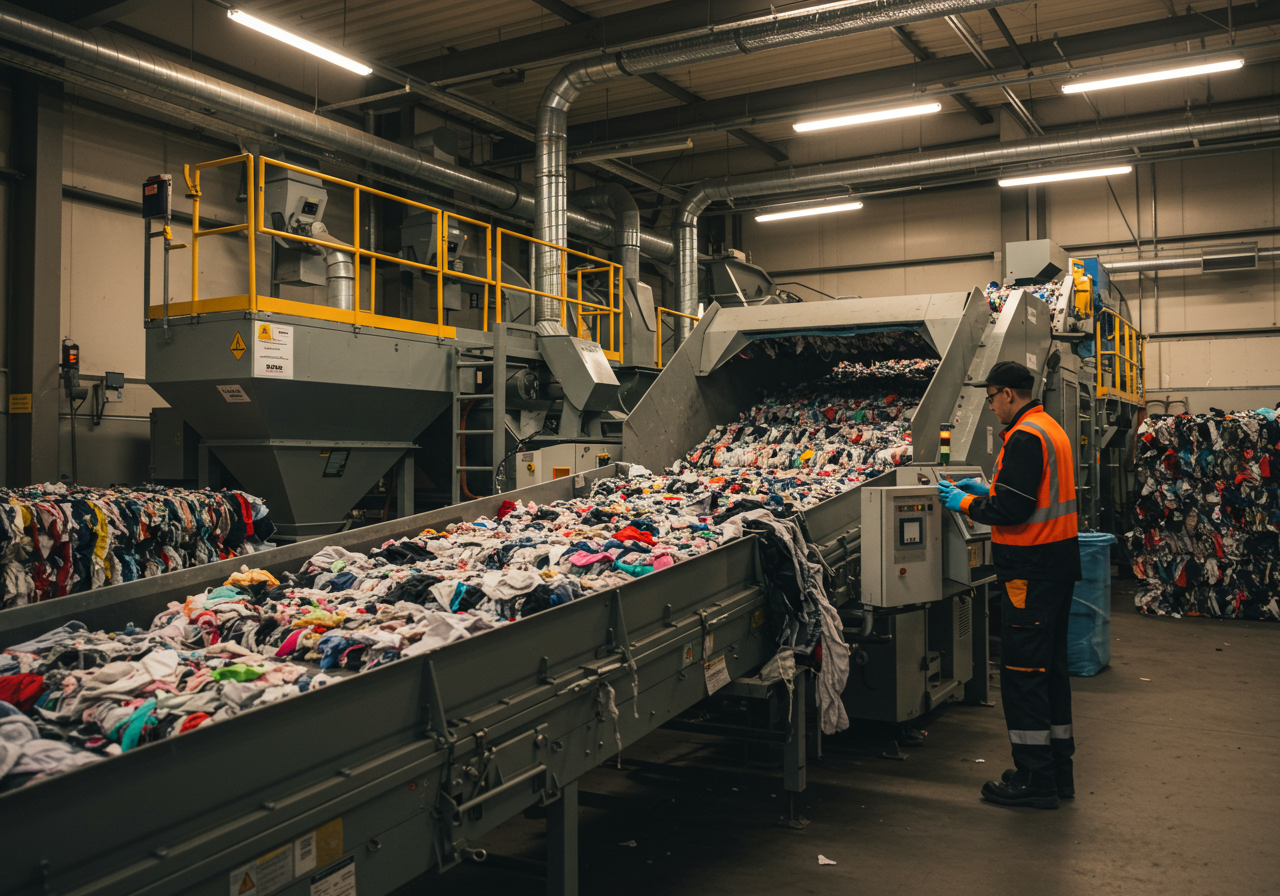Fashion industry’s environmental footprint is growing rapidly and the need for sustainable practices has never been more urgent. Each year, millions of tons of textiles end up in landfills, contributing to pollution and the depletion of resources. However, a groundbreaking shift is underway, fueled by innovation in Artificial Intelligence (AI) and chemical recycling. These cutting-edge technologies are not just transforming how we recycle textiles—they are revolutionizing the entire second-hand and textile recycling industries.
As we embark on a journey to reimagine textile waste, AI and chemical recycling are emerging as game-changers. At 2HB, we’re committed to being at the forefront of this transformation, collaborating with industry pioneers and pushing the boundaries of what’s possible in sustainability.
AI and Textile Recycling: Smarter Solutions for a Circular Economy
Artificial Intelligence has the potential to redefine the way we recycle textiles. Through advanced algorithms and machine learning, AI is being deployed to streamline the sorting, processing, and repurposing of textile waste. In essence, AI is making recycling more efficient, scalable, and, most importantly, accurate.
Companies like Greyparrot are using AI-powered visual recognition to automate textile waste sorting. This technology ensures that textiles are identified and separated with precision, ensuring that only quality materials make their way into the recycling stream. Similarly, Loomia is applying AI to create smart fabrics, tracking the lifecycle of textiles and ensuring that they’re repurposed once their initial use is over.
Another example is Landfill Harmonic, which uses AI to identify waste materials, especially textiles, and repurpose them into new items. This fusion of artificial intelligence and human creativity is helping transform landfill waste into functional and fashionable products.
At 2HB, we are closely monitoring these innovations, recognizing the immense potential AI has in improving textile recycling. While we are not yet operating AI systems at scale, we are actively collaborating with leaders in AI to integrate these technologies into our processes, ensuring a more efficient and sustainable future for the textile industry.
Chemical Recycling: Turning Waste into Value
The textile industry’s waste problem is compounded by the fact that many fabrics particularly polyester and cotton blends—are difficult to recycle using traditional methods. However, chemical recycling is changing the game. By breaking down textiles into their raw materials, chemical recycling allows for the creation of new fibers from old ones, preventing waste from piling up in landfills.
Worn Again Technologies in the UK is at the forefront of chemical recycling. Their pioneering approach uses a process that breaks down non-rewearable textiles (NRTs) into purified polyester and cellulose, which are then spun into new fibers and textiles. Their pilot facility, set to open in 2026, will play a pivotal role in advancing chemical recycling and scaling up the recycling of textiles globally.
Similarly, Renewcell is leading the way in turning used cotton textiles into high-quality fiber through its Circulose® technology. By breaking down cotton-rich textiles like old jeans and T-shirts, Renewcell creates new fibers that can be used to produce new garments. With brands like H&M already adopting Re:newcell’s technology, it’s clear that chemical recycling has the potential to revolutionize the fashion industry.
At 2HB, we are closely aligned with the goals of these pioneering companies. By exploring the potential of chemical recycling and working alongside industry leaders, we aim to integrate these methods into our own processes. Our vision is to create a circular textile economy where waste is minimized, and resources are reused, helping close the loop on fashion’s environmental impact.
2HB’s Vision for a Circular Fashion Future
At 2HB, we see AI and chemical recycling as integral parts of the future of fashion. These technologies offer the promise of reducing waste, conserving resources, and reducing the carbon footprint of textile production. As part of our mission to lead the charge in sustainability, we’re collaborating with innovators in AI and chemical recycling, ensuring that we remain on the cutting edge of textile recycling.
Our Sinaitex and Re-Life initiatives are examples of how we’re taking action today. By promoting the reuse of textiles through partnerships and programs like REWORK, we’re diverting waste from landfills and giving used clothing a second life. We’re also exploring how AI and chemical recycling can be incorporated into our operations to make our processes more efficient and impactful.
In the coming years, as AI and chemical recycling continue to mature, we will see even more widespread adoption of these technologies. While less than 1% of new textiles are currently made from recycled textiles, the innovations we’re seeing todaycombined with significant investments and brand collaborations are setting the stage for a future where textile recycling is the norm, not the exception.
A Bright, Circular Future Ahead
The road ahead is long, but the trajectory is clear. Through initiatives like Circle-8 Textile Ecosystems and the work of companies like Worn Again Technologies, Renewcell, and Greyparrot, the future of textile recycling is poised for transformation. As we move forward, collaboration, innovation, and sustainable practices will define the new textile economy.
At 2HB, we’re excited to be part of this journey. We believe that by embracing AI and chemical recycling, we can help create a circular textile economy where waste is minimized, resources are conserved, and sustainability is at the heart of everything we do.
Join us as we work toward a future where fashion is not just stylish, but also kind to the planet. Together, with the power of AI and chemical recycling, we can close the loop on textile waste and pave the way for a more sustainable, circular fashion industry.

